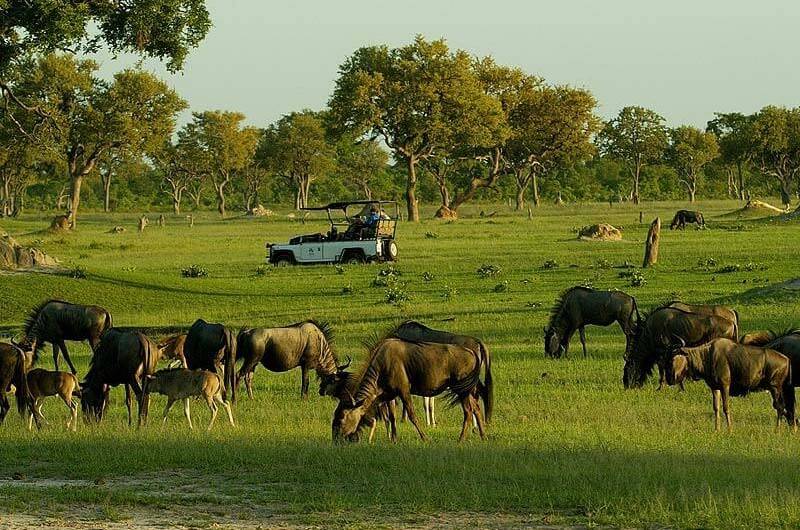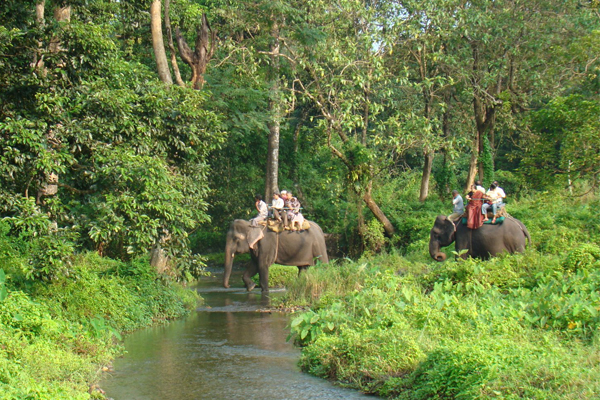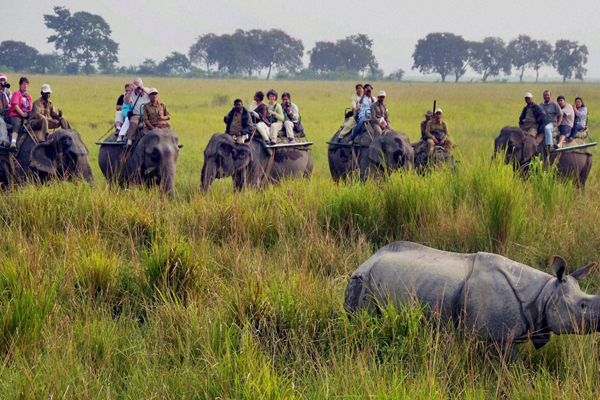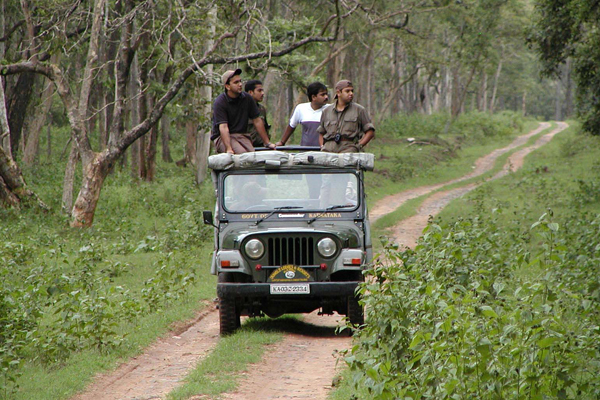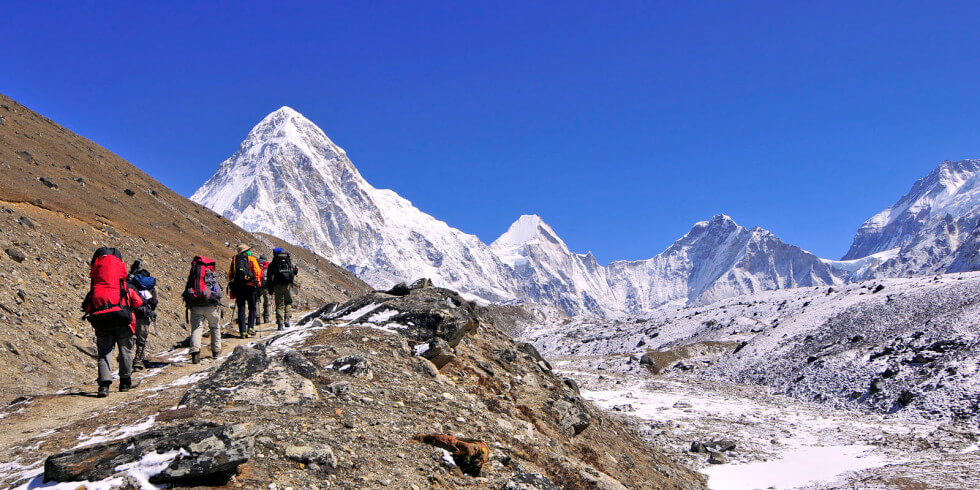Indian Wildlife Sanctuaries have always benefitted from being part of biodiverse expanses. These sanctuaries are frequently visited by wildlife photographers, naturalists, filmmakers, environmentalists, explorers, and tourists from all over the world. They blissfully experience forest environment at its best that includes rich Indian heritage of tropical Fauna and Flora. Most take back memories of witnessing ‘critically endangered’, ‘endangered’, ‘threatened’ species in their protected natural habitat.
Be it the Royal White Bengal tiger, Asian Elephant, Barasingha, and Four-horned antelope; travellers have always recommended Wildlife Safaris for its mystical charm and majestic beasts and beings. All 490+ Wildlife Safari regions, are spread across different parts of India, West Bengal , Kerala , Uttarakhand , Uttar Pradesh , Telangana , Tamil Nadu , Sikkim, Rajasthan , Punjab, Maharashtra, Jharkhand, Himachal Pradesh and Jammu and Kashmir – have been popular tourist destinations. Best hotels, resorts, lodges, and guesthouses, cater to all the needs of the travellers. Twice a day guided tours give wings to your thoughts about the Indian wildlife parks, birds and animals; helps you feel nature at its best in such remote areas. An excellent break from the busy work schedule gives one multiple opportunities to travel with family. Top 5 Sanctuaries that deserve a special mention are:
Jim Corbett National Park
Details
Originally called as Governor ‘Hailey’s National Park’, Corbett National Park is the first wildlife sanctuary that has 3 prominent safari zones, each entitled to their own focal strengths, Jhirna, Bijrani, and Dhikala. Strategically located at Uttarakhand, the wildlife habitat is around 250 Kilometres distant from the Indian metro city and National Capital Delhi.
Things You Must See
The widespread Fauna and Flora has a minimum of 435+ plant varieties, 30+ reptiles, almost 10 amphibians, countless number of fish breeds from Oscar, Piranha to the rarest of the species. Most crowded spots in the national park are the areas inhabited by the 36+ dragon fly species and the interactive 599+ birds and endangered Bengal Tigers. Just when winter wraps up in February and March, you could see the ferocious tigers basking in the warm sun and when the monsoon sets in during the months of June and July – the white peacock starts dancing for the audience. The foothills of the Himalayan range with so much beauty and wilderness stands testimony for the prestigious Jim Corbett’s association with wildlife.
Kaziranga National Park
Details
Assam tourism authorities have left no stone unturned to preserve this ‘World Heritage Site’ (UNESCO-IUCN) best known for balancing 2/3rd of world’s Rhinoceros. Declared as ‘Tiger Reserve Forest’ back in 2006, this wildlife park is located in Golaghat & Nagaon districts. You could fly down to Guw?h?ti International Airport and the park is just 217 Kilometres using road transport from the city in Assam.
Things You Must See
River Brahmaputra supports the Kaziranga vegetation flowing east to west along the southern coast. Other than the great one-horned Rhinoceros, Kaziranga National Park is home to several other species like elephants, tigers, swamp deer, wild water buffalos, and rare migrating birds. From deadly reptiles like the- Reticulated Python and Rock Python to the most poisonous, longest King Cobra, the visitor can be assured of a good variety of wildlife that is seen in these surroundings. This is one of the largest sanctuaries opened for visitors in 1937 in Northeast India, spread over 430 Square Kilometers.
Bandipur National Park
Details
Well maintained roads through the wildlife sanctuary make it a preferred outing for families in and around Karnataka. Just 80 kilometres from the Silicon City, Bangalore and the Garden City, Mysore, it settles in the Chamarajanagar district. The Bandipur National Park is located in a manner that it seems to form a border to other southern reserves like the Nagarhole National Park, Wayanad Wildlife Sanctuary and the Mudumalai National Park. Most of the tourists find a lot of traffic between the forest lanes during weekends as it connects the southern states.
Things You Must See
Passionate tourists plan activities like the Bonfire, Jungle Safari, and Mountain Trekking for almost two or three days and nights. Among things you must not miss noticing, is the lush green carpet of Bandipur, magnificent elephants, naughty little monkeys and splendid deer. They might even be seen crossing roads during mid-afternoon. And with more time, a bonus trip to the Mysore Zoo is also possible.
Gir National Park
Details
Named after the lions, the Gir Forest reserve is the only habitat of the Asiatic lion in the world. The festive vacations during October to June are the months when the majestic beast takes a stroll within its territory. Located near Sasan, Gujarat, natural environmentalists, photographers, wildlife enthusiasts visit Gir forest throughout the year.
Things You Must See
Gir deserves accolades for preserving maximum number of critically endangered species – especially the lion. The recent count made available to the public was 411 lions. There are special safari rides and lion shows meant for tourists looking to get a glimpse of the lion alone, during dusk and dawn. Every Sunday, spectators can watch at a very close range arrogant lions all set for a hunt. The Gir wildlife reserve and the Gujarat Sasan Gir Sanctuary are exclusive abodes for Asian lions within their natural habitat in India. There are several other sanctuaries that have been core to Indian Wildlife attractions. Feel free to contact us for details.

